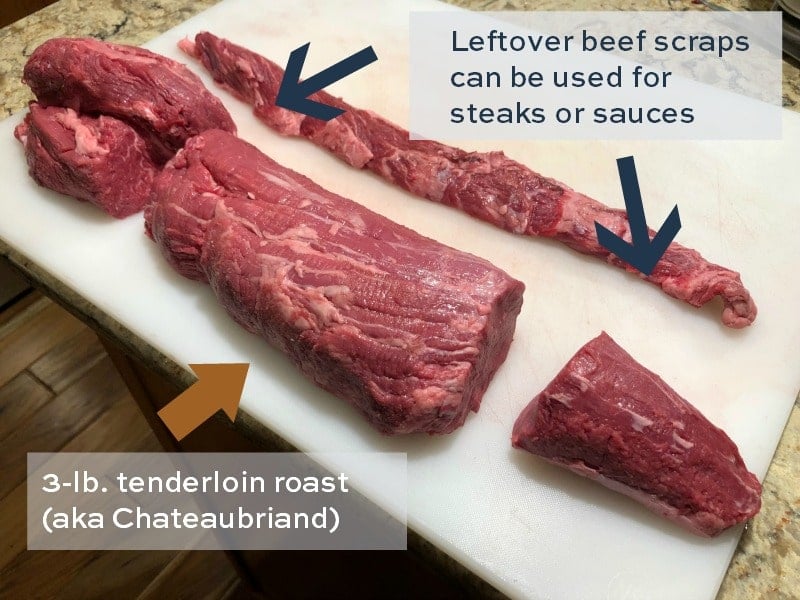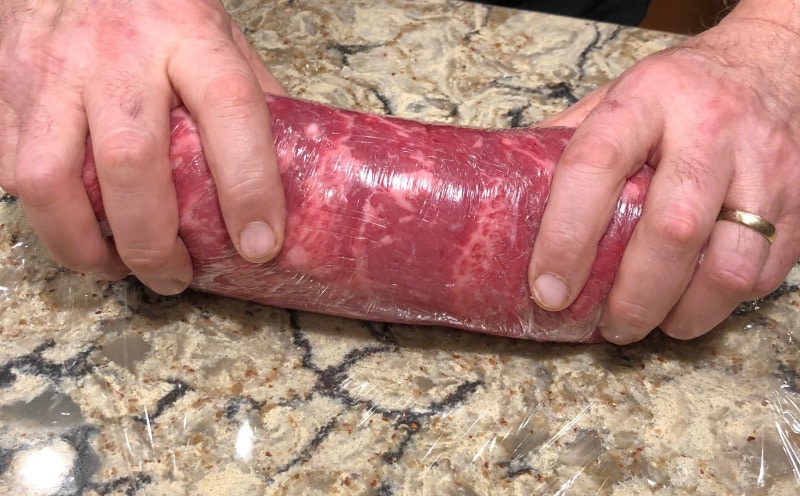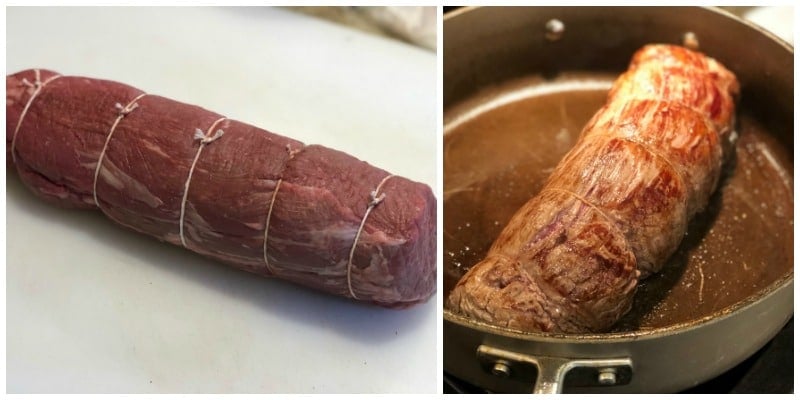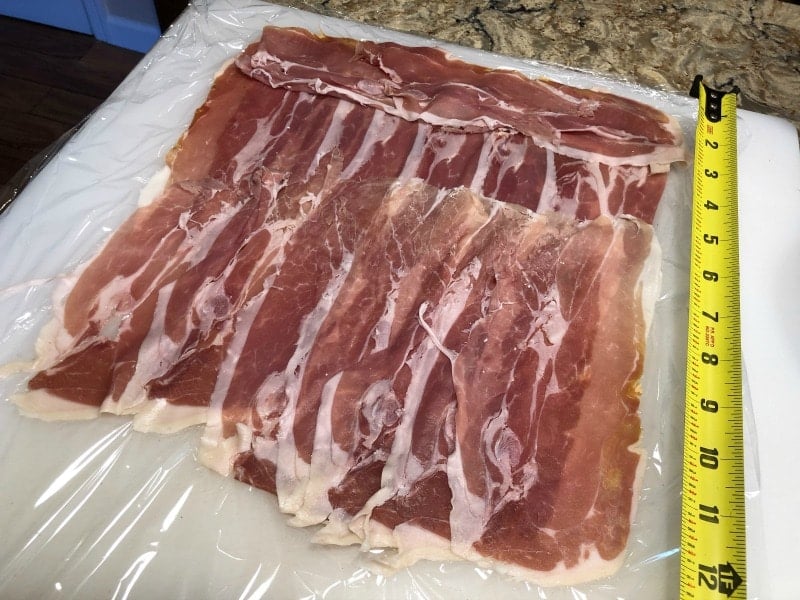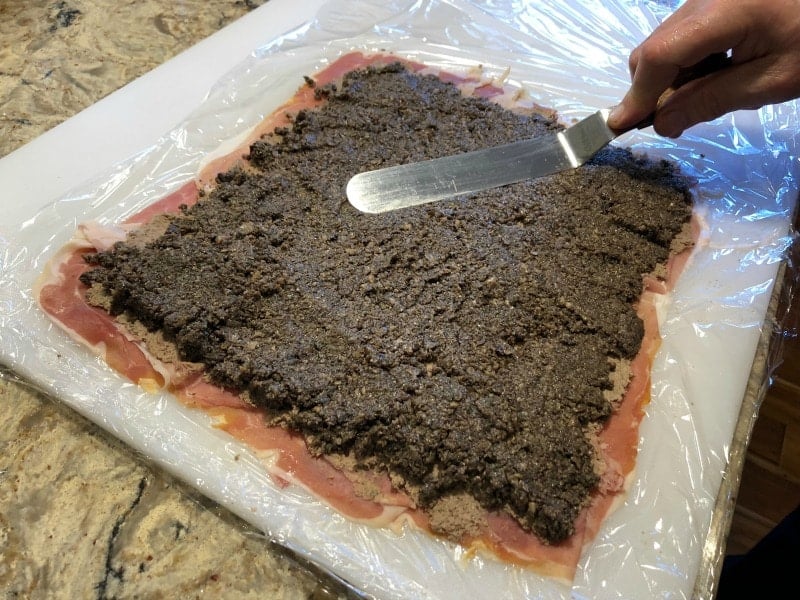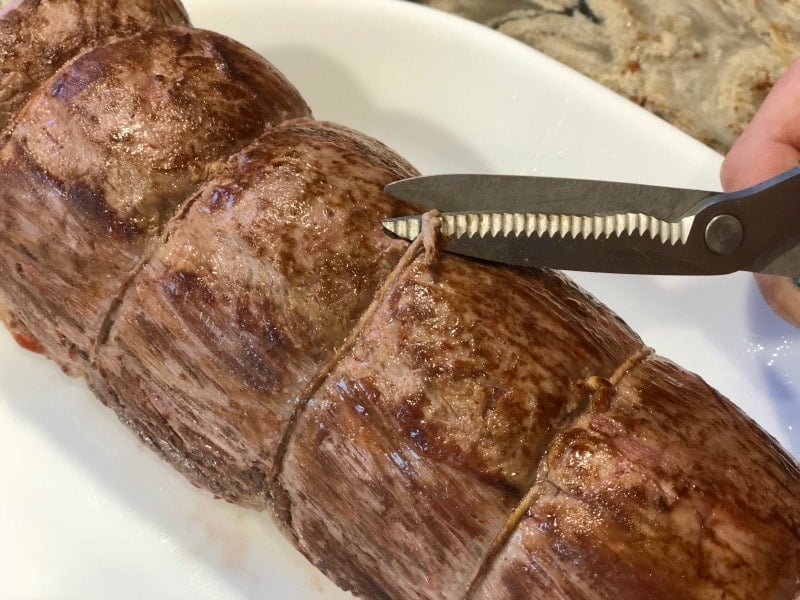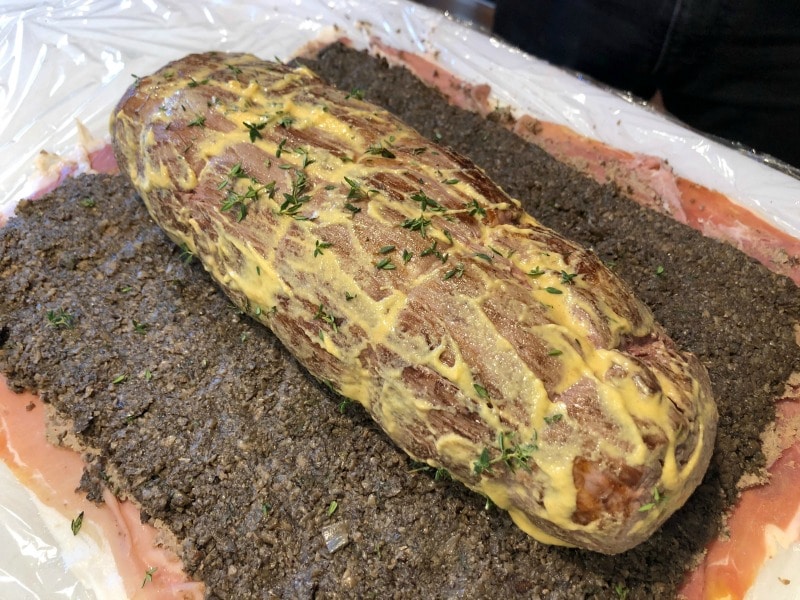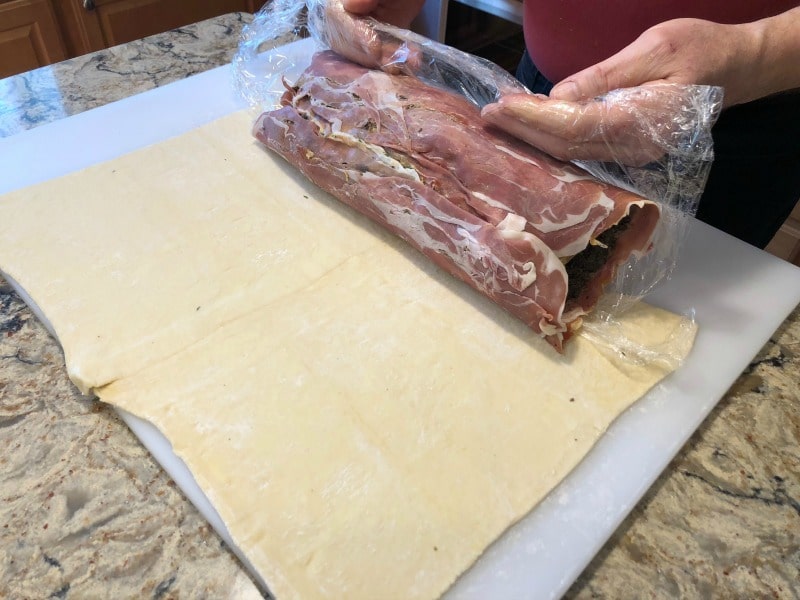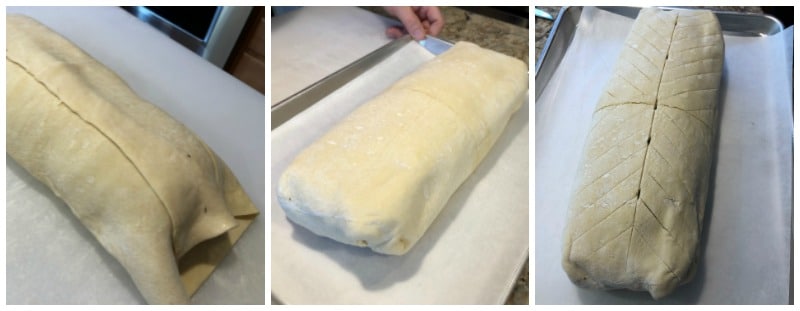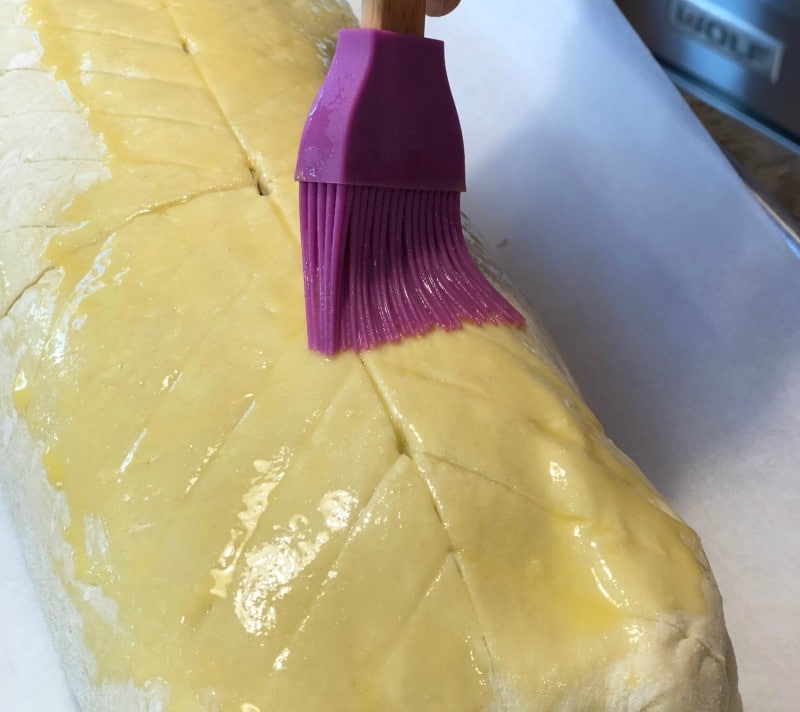We love seeing what you made! Tag us on Instagram at @afamilyfeast or hashtag #afamilyfeast so we can see your creations!
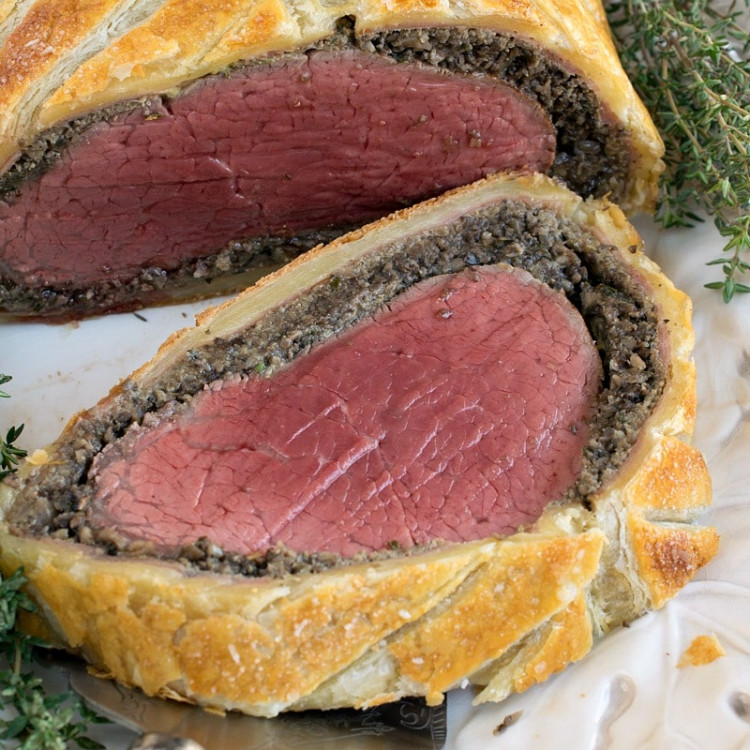
Beef Wellington
Beef Wellington is the ultimate Christmas Dinner! Tender beef tenderloin wrapped in crispy puffed pastry with layers of mushroom duxelles and pâté.
Ingredients
3–pound tenderloin roast cut from center of a fully trimmed tenderloin* (See Notes and photos)
Mushroom Duxelles
1 pound mixed mushrooms (white button, cremini, shiitake, oyster, etc.)
1/3 cup shallots, coarsely chopped
1 tablespoon fresh garlic, chopped
1 tablespoon fresh thyme leaves
2 tablespoons butter
2 tablespoons extra virgin olive oil
1/2 teaspoon kosher salt
1/2 teaspoon freshly ground black pepper
Optional Beef Liver Pâté
2 tablespoons butter
1/2 pound beef liver, cut into one-inch pieces
3/4 cup onion, diced
1 tablespoon garlic, chopped
1/4 teaspoon kosher salt
1/4 teaspoon freshly ground black pepper
1 teaspoon fresh thyme leaves
1/4 teaspoon Worcestershire sauce
1/2 teaspoon Dijon mustard
Wine Sauce
2 tablespoons vegetable oil
1 pound beef scraps* (See Notes below recipe)
1 cup shallots, coarsely chopped or sliced
2 tablespoons tomato paste
1/4 cup balsamic vinegar
1 full bottle of merlot or Pino noir or other full body red wine
2 large sprigs or 4 small sprigs of fresh thyme
1 teaspoon freshly ground black pepper
3 cups beef stock (boxed is OK, but look for one low in sodium)
4 tablespoons cold butter
Other ingredients
2 tablespoons vegetable oil to sear the roast
2 boxes frozen puff pastry (two sheets per box, you will need three sheets)
1/2 pound good quality thinly sliced prosciutto
2 tablespoons Dijon mustard
1 tablespoon fresh thyme leaves
1 egg beaten with 1 teaspoon milk
1/2 teaspoon granulated sugar
1/2 teaspoon kosher salt
Instructions
You can ask your butcher to prepare the three-pound tenderloin roast for you. That piece is called the chateaubriand. If you are buying a whole tenderloin (about 7 pounds), you will need to remove some silver skin, excess fat, the tail piece, the long strip on the side and the large fatter end, leaving precisely a three-pound piece that will be used for this dish. The scraps can be cut up into steaks or can be used for other purposes.
The day before, lay out a long piece of plastic wrap and place the beef on one end and tightly roll up keeping the piece as round as possible. Fold in the plastic ends and repeat with a second, long piece of plastic then finally a third long piece of plastic. Place this in your refrigerator overnight. The purpose of this step is to have the beef formed in as round a shape as possible.
Either the day prior, or early in the day of serving, prepare the mushroom Duxelles, the optional liver pate and the wine sauce.
MAKE AHEAD: To prepare the mushroom Duxelles, coarsely cut the mushrooms so that they fit in your food processor.
Place the mushrooms, shallots, garlic and thyme in your processor and pulse to rice sized pieces.
In a large saute pan over medium high, melt butter in the oil and add mushroom mixture along with the salt and pepper and cook for 10-15 minutes. As they cook, they will give up moisture but eventually the moisture evaporates and the mixture becomes thick and pasty. Be careful at this point that it doesn’t stick. If you have to, add a little more butter or oil until you achieve the pasty thick consistency and the mushrooms have cooked and the raw smell is gone. The process should take about 10 minutes, maybe a little longer. Set this aside in the refrigerator until needed.
MAKE AHEAD: Make the optional pate by melting the butter over medium heat then adding the liver, onion, garlic, salt, pepper and thyme. Cook until the onions are tender and the liver cooked, about 8-10 minutes.
Remove from heat and place in a food processor along with Worcestershire sauce and mustard. Puree to a paste and refrigerate until needed.
MAKE AHEAD: To make the sauce, in a medium heavy bottomed pot, heat vegetable oil over medium high and once hot, add beef scraps and brown on all sides.
Move to edges of pot and add shallots and cook for two minutes then move to edges and add the tomato paste and cook for one minute.
Add vinegar and cook just until it evaporates, less than a minute. Scrape the bottom as it dissipates.
Add the full bottle of wine along with the thyme sprigs and black pepper. (No salt) Bring to a boil and reduce until all but one cup of liquid is left.
Add beef stock, bring to a boil then lower to a slow simmer and simmer for one hour or until the mixture has reduced to approximately 1 ½ cups of liquid.
Strain out and discard the solids and pour the liquid back in a glass measuring cup and take a measurement. If it is more than 1 ½ cups, pour into pan and reduce further until it is between 1 and 1 ½ cups of liquid. Remove from heat and stir in the cold butter. The butter will thicken it somewhat. Refrigerate until needed at end of recipe. Note: When reheating the sauce for service, just get it hot enough for serving, do not boil.
About 3 hours prior to service, remove the pate and Duxelles from refrigeration to soften.
Remove the beef from refrigeration and remove the three layers of plastic. Use five lengths of butcher’s twine and tie the roast so that it keeps its round shape while searing.
Heat a large saute pan over medium high to high heat (larger than the length of the roast). Our roast was 11” and our pan was 12”. Add the vegetable oil and once hot, gently add the beef. Sear the beef for one minute per side, rolling the roast 1/8th turn every minute. After the eight-minute cooking time, remove the roast with two pair of tongs to a plate or platter and refrigerate immediately. Keep refrigerated for at least 30 minutes but do not remove the strings yet.
Pull out three sheets of puff pastry dough to thaw. Once thawed, open up and cover with a dish towel.
While the beef is chilling, lay out a large piece of plastic wrap.
On top of the plastic, lay out the prosciutto slices*(see Notes below) slightly longer than the length of the roast and wide enough so when wrapped around the roast, both sides will touch in the center or overlap slightly. To measure the width properly, I cut one piece of string and wrapped it around the roast to get the circumference and placed the string on top of the prosciutto to get the width correct, then added 2 inches to account for the pate and Duxelles.
Using an offset spatula, spread the pate to cover the prosciutto, leaving about a half inch on all sides. Repeat with the Duxelles spreading on top of the pate.
Remove the roast from refrigeration and cut off the five strings.
Leave it on the platter and smear most of the mustard on the roast, except the bottom. Sprinkle most of the thyme the same way over the mustard.
Lift and invert down on the prosciutto, pate and Duxelles, leaving the untreated bottom facing up. Spread the remaining mustard and thyme over the exposed meat.
Carefully lift the edge closest to you by grabbing the plastic and lifting up and over the meat. Gently peel the plastic back. Repeat for the other side the same way. If the two sides overlap, pull one side back down and trim off some of the pate and Duxelles so that the two sides join directly center. I had to spoon off a few tablespoons of the mixture to get the two sides to meet perfectly in the center.
Push the whole wrapped roast away from you to make room for the puff pastry dough but leave the roast sitting on the plastic.
On a clean surface, lay out two sheets of dough, floured side down. Side by side, they should be wide enough to go well past the ends of the roast. Wet the edge of one piece and slide the other over the edge of the other and press to combine the two into one long sheet.
Take the third sheet and cut along the dough folds separating into three. Set one aside and freeze for some other recipe. Take the two remaining pieces to use on the edge closest to you. To do this, wet the big dough along the edge closest two you and place the two small pieces side by side overlapping and sticking to the big piece to finally give you one large piece of dough (also wetting the two small pieces in the center so they stick together). Use a rolling pin and roll out the entire piece slightly to make sure it is large enough to cover the roast.
Cut a strip off the left and right of the pastry sheet so the width is about 1 ½ inches longer than the roast on both sides. This gives you room to fold the ends in.
Using the plastic under the roast, lift it up and roll out onto the center of the puff pastry, removing and discarding the plastic.
Lift the back of the pastry forward pulling up to the center. Before sealing with water, fold the front up to test the length. It should slightly overlap the back piece. If not, trim excess.
Wet the top edge then pull the front piece up and over the edge, pressing slightly to seal. (It will go seam down so don’t worry about pressing too hard.)
Wet and fold each end in like an envelope.
Line a sheet tray with parchment paper. Gently lift the roast onto the pan, making sure you turn it so the seam is facing down. Immediately place in the refrigerator for at least 30 minutes.
About 15 minutes before the roast comes out of the refrigerator, set oven rack to center with no racks above and preheat oven to 410 degrees F. I know that sounds like an odd temperature but too high and the pastry burns and the roast ends up with a brown outer ring, too low and the roast will not come up to temperature quick enough to cook properly.
After 30 minutes, remove the sheet tray from the refrigerator and make at least four slits in the top to let steam escape, then make whatever decorative cuts you wish on top. I don’t like making leaves and flowers from the extra pastry dough because they puff up to high and don’t look right, but that is just me.
Mix the egg and milk and brush over the entire roast, trying not to let it drip onto the paper. If it drips, it burns on the paper and gives off a smell. I know, this sounds really picky but if you are going through the effort to make this, let’s go for perfect.
Go back over your cuts and steam vents if they filled with egg wash.
Mix the salt and sugar and sprinkle over the egg wash.
Finally, at last, place in the oven for between 30 and 35 minutes for medium rare. I used a probe thermometer inserted into the end (a must to get this roast perfect) and I removed it from the oven at exactly 120 degrees F, which was 32 minutes.
Leave probe in and let the roast sit for at least ten minutes before slicing.
While roast is resting, slowly reheat the sauce to serving temperature.
Transfer cooked roast to a cutting board using a spatula on each end to lift. Slice into 8-10 thick slices, gently transfer to serving plates with a spatula and drizzle over some wine sauce, or serve on the side.
Last Step! Please leave a review and rating letting us know how you liked this recipe! This helps our business thrive & continue providing free recipes.
Notes
- For the sauce, use any cheap beef scraps you can find. I found a package of reduced-price beef pieces that the butcher trimmed from various cuts. Or use chuck or stew meat.
- The steps taken to wrap in layers of plastic overnight, seal with butchers’ twine and refrigerate before and after wrapping is an attempt to get the roast as round as possible. Getting it perfectly round is almost not possible since gravity eventually takes over. However, without these extra steps, you’ll end up with a flattened oval shaped roast.
- There isn’t much salt in this recipe because of the salt present in the prosciutto, beef stock, etc., so if you use salt, let your guests salt as needed.
- I left the prosciutto on the plastic deli paper to make it easier. Just flip up and over plastic wrap, then lift off the deli paper instead of trying to handle each piece of prosciutto.
Find it online: https://www.afamilyfeast.com/beef-wellington/
